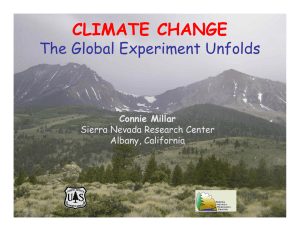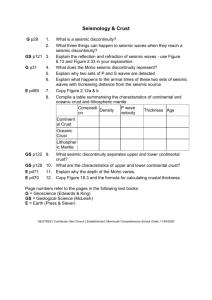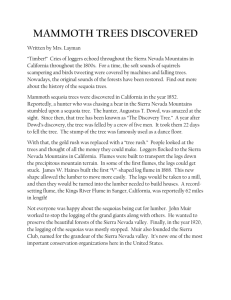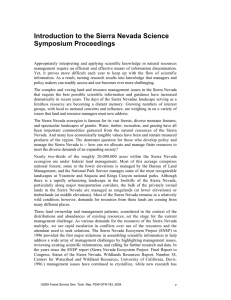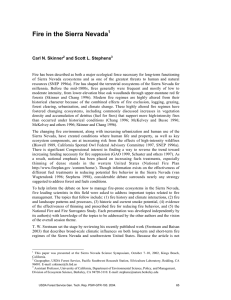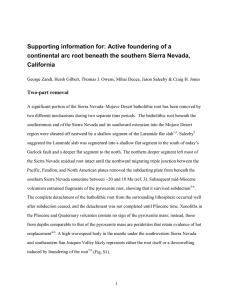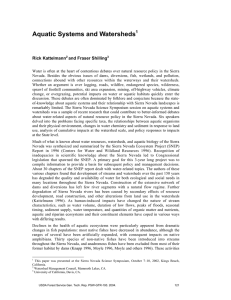SNEP: S
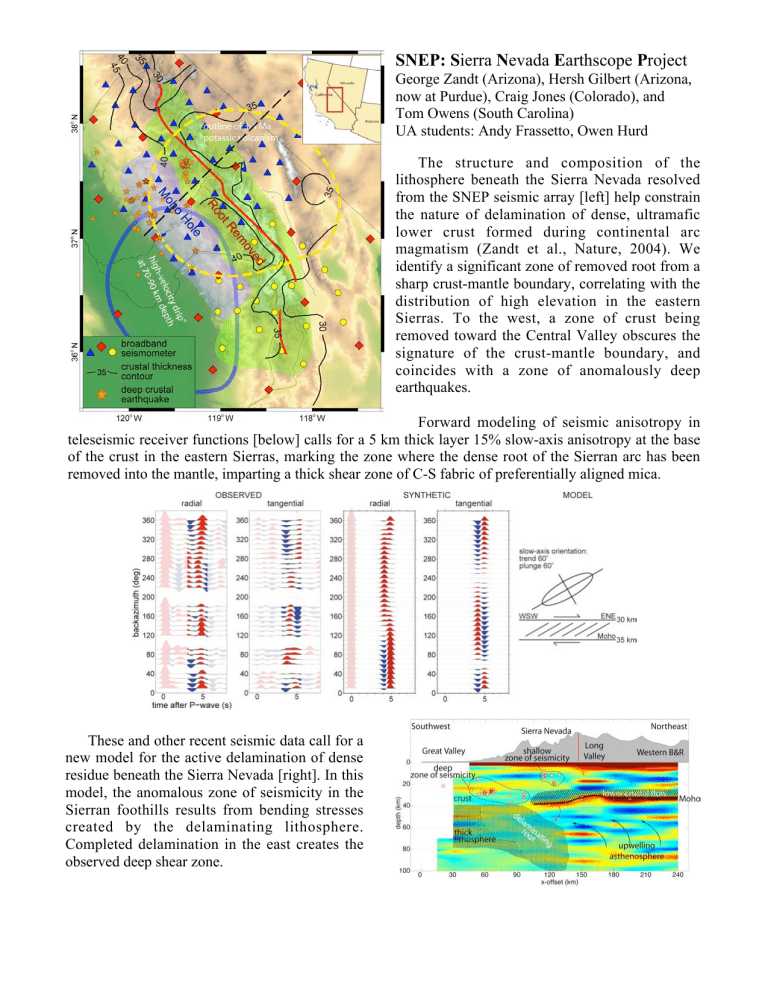
SNEP: S
ierra
N
evada
E
arthscope
P
roject
George Zandt (Arizona), Hersh Gilbert (Arizona, now at Purdue), Craig Jones (Colorado), and
Tom Owens (South Carolina)
UA students: Andy Frassetto, Owen Hurd
The structure and composition of the lithosphere beneath the Sierra Nevada resolved from the SNEP seismic array [left] help constrain the nature of delamination of dense, ultramafic lower crust formed during continental arc magmatism (Zandt et al., Nature, 2004). We identify a significant zone of removed root from a sharp crust-mantle boundary, correlating with the distribution of high elevation in the eastern
Sierras. To the west, a zone of crust being removed toward the Central Valley obscures the signature of the crust-mantle boundary, and coincides with a zone of anomalously deep earthquakes.
Forward modeling of seismic anisotropy in teleseismic receiver functions [below] calls for a 5 km thick layer 15% slow-axis anisotropy at the base of the crust in the eastern Sierras, marking the zone where the dense root of the Sierran arc has been removed into the mantle, imparting a thick shear zone of C-S fabric of preferentially aligned mica.
These and other recent seismic data call for a new model for the active delamination of dense residue beneath the Sierra Nevada [right]. In this model, the anomalous zone of seismicity in the
Sierran foothills results from bending stresses created by the delaminating lithosphere.
Completed delamination in the east creates the observed deep shear zone.




